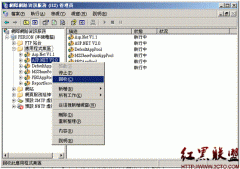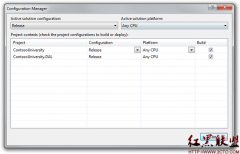asp.net获取网站路径
网站在服务器磁盘上的物理路径: HttpRuntime.AppDomainAppPath
虚拟程序路径: HttpRuntime.AppDomainAppVirtualPath
任何于Request/HttpContext.Current等相关的方法, 都只能在有请求上下文或者页面时使用. 即在无请求上下文时,HttpContext.Current为null. 而上面提到的方法一直可用.
对于全局Cache对象的访问亦然.
==================================================================================
示例:输出asp.net 网站路径。
private void responseHtml()
{
System.Text.StringBuilder sb = new System.Text.StringBuilder();
sb.Append(string.Format("当前时间: {0}", Server.HtmlEncode(DateTime.Now.ToString())));
sb.Append("<br />");
sb.Append(string.Format("当前请求的虚拟路径: {0}",Server.HtmlEncode(Request.CurrentExecutionFilePath)));
sb.Append("<br />");
sb.Append(string.Format("获取当前应用程序的根目录路径: {0}", Server.HtmlEncode(Request.ApplicationPath)));
sb.Append("<br />");
sb.Append(string.Format("当前请求的虚拟路径: {0}",Server.HtmlEncode(Request.FilePath)));
sb.Append("<br />");
sb.Append(string.Format("当前请求的虚拟路径: {0}",Server.HtmlEncode(Request.Path)));
sb.Append("<br />");
sb.Append(string.Format("获取当前正在执行的应用程序的根目录的物理文件系统路径: {0}", Server.HtmlEncode(Request.PhysicalApplicationPath)));
sb.Append("<br />");
sb.Append(string.Format("获取与请求的URL 相对应的物理文件系统路径: {0}", Server.HtmlEncode(Request.PhysicalApplicationPath)));
sb.Append("<br />");
Response.Write(sb.ToString());
}
}
输出:当前时间: 2007-08-30 11:03:49
当前请求的虚拟路径: /aDirectory/Sample/responseHtml.aspx
获取当前应用程序的根目录路径: /aDirectory
当前请求的虚拟路径: /aDirectory/Sample/responseHtml.aspx
当前请求的虚拟路径: /aDirectory/Sample/responseHtml.aspx
获取当前正在执行的应用程序的根目录的物理文件系统路径: E:\Visual Studio 2005\
获取与请求的URL 相对应的物理文件系统路径: E:\Visual Studio 2005\\aDirectory\
在ASP.NET编程中经常需要用Request获取url的有关信息.
测试的url地址是http://www.test.com/testweb/default.aspx, 结果如下:
Request.ApplicationPath: /testweb
Request.CurrentExecutionFilePath: /testweb/default.aspx
Request.FilePath: /testweb/default.aspx
Request.Path: &nb
相关新闻>>
- 发表评论
-
- 最新评论 进入详细评论页>>



